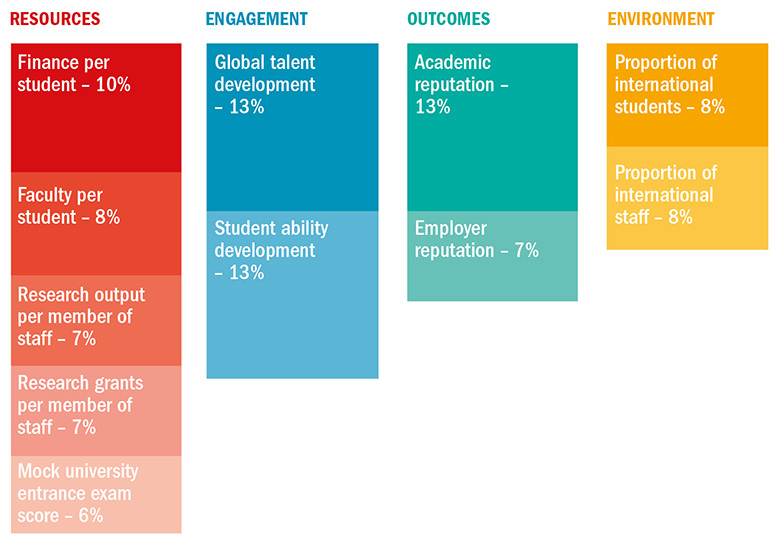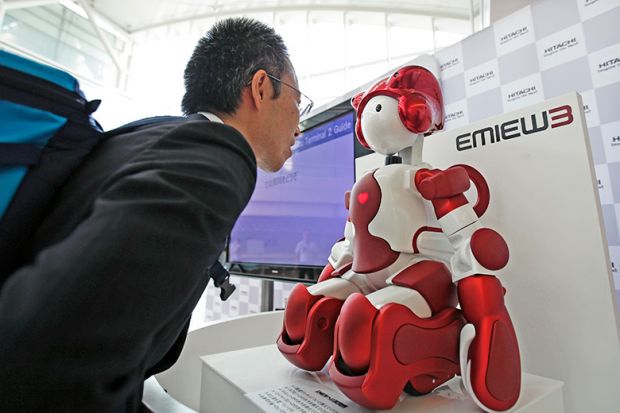View the full results of the Japan University Rankings 2017
The Times Higher Education Japan University Ranking adopts a balanced scorecard approach, with 11 individual performance indicators combining to create an overall score that reflects the broad strength of an institution. The overall methodology explores four key areas, which we call pillars:
Resources
This pillar includes metrics on finance (income) per student, which shows whether the institution has the money to effectively deliver teaching, and the ratio of faculty members to students, which gives a sense of whether the college has enough teachers to teach.
We also look at the scholarly output and research grants per member of staff at each institution. Having faculty who are experts in their academic fields can significantly enhance a student’s educational experience.
The final metric measures the national mock university exam scores received by institutions’ entrants to get an indication of the academic calibre required to gain admission to a particular university and its popularity among top students.
Engagement
This pillar measures the quality of university teaching through the High School Advisors Survey, which gathered the views of student careers advisers from almost 2,400 Japanese high schools. The survey asked advisers to name the top 15 universities that they believe teach students to the highest global standards, and the 15 universities that they think are best at developing students’ abilities.

Outcomes
This pillar looks at the overall academic reputation of the university within Japan, based on votes from Japanese scholars in Times Higher Education ’s annual Academic Reputation Survey of leading scholars worldwide, which helps us to determine which institutions have the best reputation for excellence in teaching.
We also consider the reputation of the university among employers to get a sense of whether the university produces graduates whom the market wants. This is based on a survey of human resources departments from almost 600 publicly listed companies. Each department was asked to identify the 10 best universities based on the strengths of their employees from those institutions. Each department then completed a survey for each of the 10 universities that it identified, rating the employees from these institutions in several areas.
Read more about the PwC Times Higher Education Japan University Rankings 2017 report here.
Environment
This pillar looks at the make-up of the student and staff body at each campus, helping students to determine whether they will find themselves in a diverse, supportive and inclusive university environment.
We examine the proportion of international students and staff on campus, which are key indicators of whether the university is able to attract talent from across the world. It also demonstrates which institutions have cultivated a multicultural campus where students from different backgrounds have the opportunity to learn from one another.
Archipelago of excellence? Discover which institutions stand out in our new rankings
Data for the rankings come from a variety of sources. These include Elsevier, Benesse Corporation, Nikkei Human Resources, the Japanese government and the Times Higher Education Academic Reputation Survey. Our data are, in most cases, normalised so that the value we assign in each metric can be compared sensibly with other metrics. The calculation of the Times Higher Education Japan University Rankings has been subject to independent audit by professional services firm PricewaterhouseCoopers (PwC). For more information, see www.timeshighereducation.com.




